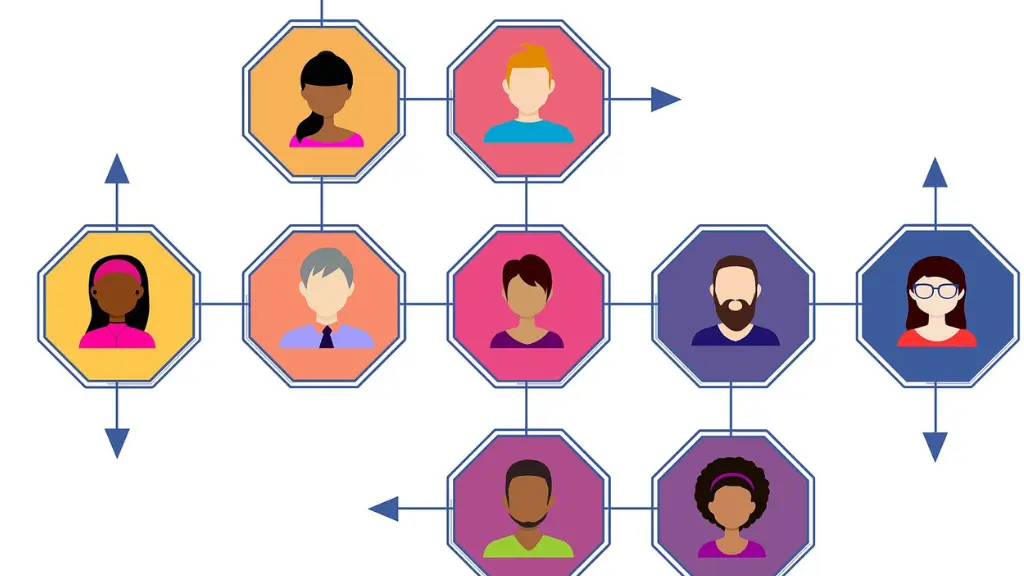

As a science marketing agency, our focus is on helping life sciences companies effectively promote their products and services to a targeted audience. We understand that the life sciences industry is constantly evolving, and it can be challenging to keep up with the latest trends and technologies. That’s where we come in.
Our team of experts has extensive experience in life sciences marketing, and we have a deep understanding of the unique challenges that life science marketing companies in this industry face. Life sciences marketing companies work closely with our clients to develop customized marketing strategies that are tailored to their specific needs and goals. Whether you’re looking to build brand awareness, generate leads, or increase sales, we have the expertise and resources to help you achieve your objectives.

As a science marketing agency, I understand the importance of promoting scientific products and services. Science marketing agency involves promoting scientific products and services to a target audience, which can include scientists, researchers, and the general public.
Science marketing agency has evolved over the years, from traditional methods such as print and television advertising to more modern techniques such as social media and content marketing. With the rise of digital marketing, science marketing has become more targeted and data-driven, allowing for more effective and efficient promotion of scientific products and services.
Effective science marketing agency requires a deep understanding of the target audience and the scientific products or services being promoted. Key principles of scientific marketing include:
In conclusion, science marketing agency is an essential aspect of promoting scientific products and services. By understanding the evolution of science marketing and applying key principles, a science marketing agency can effectively promote scientific products and services to a targeted audience.

As a science marketing agency, I offer a wide range of services to help life science companies grow and succeed. Some of the primary services:
One of the most important services that we offer is brand strategy and positioning. This involves working with clients to define their brand identity, messaging, and positioning in the market. We help clients to develop a clear and compelling brand story that resonates with their target audience. This includes conducting market research, developing buyer personas, and creating messaging frameworks.
Another key service that we offer is digital marketing and SEO. We help clients to improve their online presence and drive traffic to their website through a range of digital marketing tactics, including search engine optimization (SEO), pay-per-click (PPC) advertising, social media marketing, and email marketing. We use data-driven strategies to optimize our clients’ digital marketing campaigns and ensure that they are reaching the right audience at the right time.
Finally, we offer content creation and management services to help clients create and distribute high-quality content that engages their target audience. This includes developing content strategies, creating blog posts, whitepapers, and other types of content, and managing content distribution across multiple channels. We use a data-driven approach to ensure that our clients’ content is optimized for search engines and resonates with their target audience.
At our science marketing agency, we understand the unique needs and challenges of life science companies. We have experience working with a wide range of clients in the industry, including biotech startups, medical device companies, and pharmaceutical companies. Whether you need help with brand strategy, digital marketing, or content creation, we have the expertise and experience to help you succeed.

As a science marketing agency, it is crucial to understand the target audience of our clients. This helps us to create effective marketing strategies that resonate with their customers. In this section, I will discuss the two main components of target audience analysis: identifying client personas and conducting market research and competitive analysis.
To create a successful marketing campaign, we must first identify the ideal customer for our client’s product or service. This involves creating a client persona, which is a detailed description of the target audience. We gather information such as demographics, interests, pain points, and buying behaviors to create a clear picture of who the customer is.
To create a client persona, we conduct surveys, interviews, and focus groups with the client’s current and potential customers. We also gather data from online sources such as social media and forums. This information helps us to create a persona that accurately represents the target audience.
After identifying the client persona, we conduct market research to understand the industry and the competition. We analyze market trends, consumer behavior, and industry regulations to create a comprehensive understanding of the market.
We also conduct competitive analysis to understand the strengths and weaknesses of our client’s competition. This involves analyzing their marketing strategies, products, pricing, and customer reviews. This information helps us to create a marketing strategy that differentiates our client from the competition.
In conclusion, target audience analysis is a crucial step in creating effective marketing strategies for our clients. By identifying client personas and conducting market research and competitive analysis, we can create a marketing campaign that resonates with the target audience and differentiates our client from the competition.

As a science marketing agency, I have had the opportunity to work with several biotech companies and life science product launches. In this section, I will share some of our success stories and case studies.
One of our biotech clients was struggling to get their product noticed in a crowded market. We developed a targeted campaign that focused on the unique benefits of their product and leveraged social media to reach their target audience. The campaign resulted in a significant increase in website traffic and product inquiries, leading to a boost in sales.
Another biotech company approached us with the challenge of raising awareness about their new gene therapy product. We created a comprehensive marketing strategy that included a mix of digital and traditional marketing tactics. The campaign resulted in widespread media coverage and a significant increase in product interest, leading to successful clinical trials and eventual FDA approval.
We worked with a life sciences company that was launching a new diagnostic test. Our team developed a targeted email campaign to reach healthcare professionals and a social media campaign to reach patients. The campaign resulted in a high level of engagement and interest, leading to successful product adoption and increased revenue for the client.
Another life sciences company came to us with the challenge of launching a new medical device. We developed a comprehensive marketing strategy that included a mix of digital and traditional marketing tactics, as well as targeted outreach to key opinion leaders in the industry. The campaign resulted in a successful product launch and widespread adoption by healthcare professionals.
In conclusion, as a science marketing agency, we have a proven track record of success in helping biotech companies and life sciences product launches achieve their marketing goals. Our targeted and comprehensive campaigns have resulted in increased product interest, successful clinical trials, FDA approval, and successful product launches.

As a life sciences marketing agency, I understand the unique challenges of marketing in this industry. Life sciences companies need to navigate complex regulations and communicate technical information to a variety of audiences. Here are some effective marketing strategies for life sciences companies:
Inbound marketing is a strategy that focuses on attracting customers through content marketing, search engine optimization, and social media. This strategy is particularly effective for life sciences companies because it allows them to educate potential customers about their products and services.
To implement an inbound marketing strategy, life sciences companies should create high-quality content that addresses the pain points of their target audience. This content can be in the form of blog posts, whitepapers, e-books, and webinars. By providing valuable information, life sciences companies can establish themselves as thought leaders in their industry and attract potential customers.
Outbound marketing is a strategy that involves reaching out to potential customers through advertising, direct mail, and email marketing. While inbound marketing is focused on attracting customers, outbound marketing is focused on reaching out to them directly.
For life sciences companies, outbound marketing can be particularly effective for reaching healthcare professionals. By targeting specific healthcare professionals through email marketing or direct mail, life sciences companies can promote their products and services to a highly targeted audience.
Account-based marketing is a strategy that involves targeting specific accounts with personalized marketing messages. This strategy is particularly effective for life sciences companies because it allows them to tailor their marketing messages to the specific needs of their customers.
To implement an account-based marketing strategy, life sciences companies should identify their target accounts and develop personalized marketing messages for each account. This can involve creating customized content, offering personalized promotions, and providing targeted advertising.
In conclusion, life sciences companies face unique challenges when it comes to marketing. By implementing effective marketing strategies such as inbound marketing, outbound marketing, and account-based marketing, these companies can overcome these challenges and reach their target audience with personalized and engaging marketing messages.

As a science marketing agency, it is crucial for us to stay up-to-date with industry regulations to ensure that our marketing practices are compliant. Failure to comply with regulations can result in legal consequences and damage to our reputation.
One important regulation to consider is the Federal Trade Commission Act, which prohibits unfair or deceptive marketing practices. This includes false advertising, misleading claims, and omitting important information about a product or service.
In addition, the Food and Drug Administration (FDA) regulates marketing for medical devices, pharmaceuticals, and certain types of food products. Advertisements for these products must be truthful, not misleading, and include all necessary information about potential risks and benefits.
In addition to complying with regulations, it is important for us to practice ethical marketing. This means being transparent and honest with our clients and their customers.
One way to ensure ethical marketing is to avoid making exaggerated or false claims about a product or service. We should also disclose any potential conflicts of interest, such as financial relationships with the client.
Another important aspect of ethical marketing is respecting the privacy of individuals. We must obtain consent before collecting and using personal information for marketing purposes, and provide an easy way for individuals to opt-out of future communications.
By following industry regulations and practicing ethical marketing, we can build trust with our clients and their customers, and contribute to the overall integrity of the science marketing agency industry.

As a science marketing agency, measuring the return on investment (ROI) is crucial to ensure that our clients are getting the most out of their marketing efforts. In this section, I will discuss the various methods we use to measure marketing ROI.
One of the primary tools we use to measure marketing ROI is analytics. We collect data on website traffic, social media engagement, email open rates, and other metrics to determine the effectiveness of our marketing campaigns. We then interpret this data to identify areas where we can improve our strategies and optimize our marketing efforts.
To make sense of the data, we use various tools such as Google Analytics, HubSpot, and other marketing automation platforms. These tools help us track user behavior, identify trends, and measure the impact of our campaigns on lead generation and sales.
To measure the success of our marketing campaigns, we use various performance metrics. These metrics include:
Conversion rates: We track the number of website visitors who take a desired action, such as filling out a contact form or making a purchase.
Cost per lead: We calculate the cost of acquiring a single lead, which helps us determine the ROI of our marketing efforts.
Customer acquisition cost (CAC): We measure the cost of acquiring a new customer, which helps us determine the profitability of our campaigns.
By tracking these performance metrics, we can identify areas where we need to improve our marketing strategies and optimize our campaigns for better ROI.
In conclusion, measuring marketing ROI is crucial for any science marketing agency. By using analytics and performance metrics, we can track the effectiveness of our campaigns and make data-driven decisions to optimize our marketing efforts for better ROI.

As a science marketing agency, I am always looking for the latest trends in the integral ad service industry to stay ahead of the curve. Here are a few future trends that I believe will shape the science marketing agency landscape in the coming years.
Technology is advancing at a rapid pace, and science marketing agency need to keep up with the latest developments to stay relevant. One of the most important technological developments in recent years is the emergence of artificial intelligence (AI). AI can be used to analyze large amounts of data and provide insights that would be impossible for humans to uncover on their own. This scientific marketing agency technology will be particularly useful in the healthcare industry, where data analysis is crucial for drug development and clinical trials.
Another technological advancement that will shape the future of science marketing agency is virtual and augmented reality. These technologies allow scientists to visualize complex data in new ways, making it easier to communicate their findings to a wider audience. Virtual and augmented reality will also be useful for training purposes, allowing scientists to practice complex procedures in a safe and controlled environment.
The science marketing landscape is constantly evolving, and agencies need to be able to adapt to these changes to stay competitive. One of the most significant market changes in recent years is the rise of social media. Social media platforms like Twitter, LinkedIn, and Facebook are now essential tools for science marketing agency to reach their target audience. Agencies need to be able to create content that is engaging and shareable on these platforms to maximize their reach.
Another market change that science marketing agency need to be aware of is the increasing importance of sustainability. Consumers are becoming more conscious of the environmental impact of the products they buy, and this trend is likely to continue in the coming years. Science marketing agency need to be able to communicate the sustainability of their products and services to appeal to this growing market.

In conclusion, science marketing agency need to stay on top of the latest technological advancements and market changes to remain competitive in the industry. By embracing new technologies and adapting to changing market trends, agencies can stay ahead of the curve and provide their clients with the best possible service. See more articles like this by clicking here: Open Science: A Clear Path to Transparent and Collaborative Research.